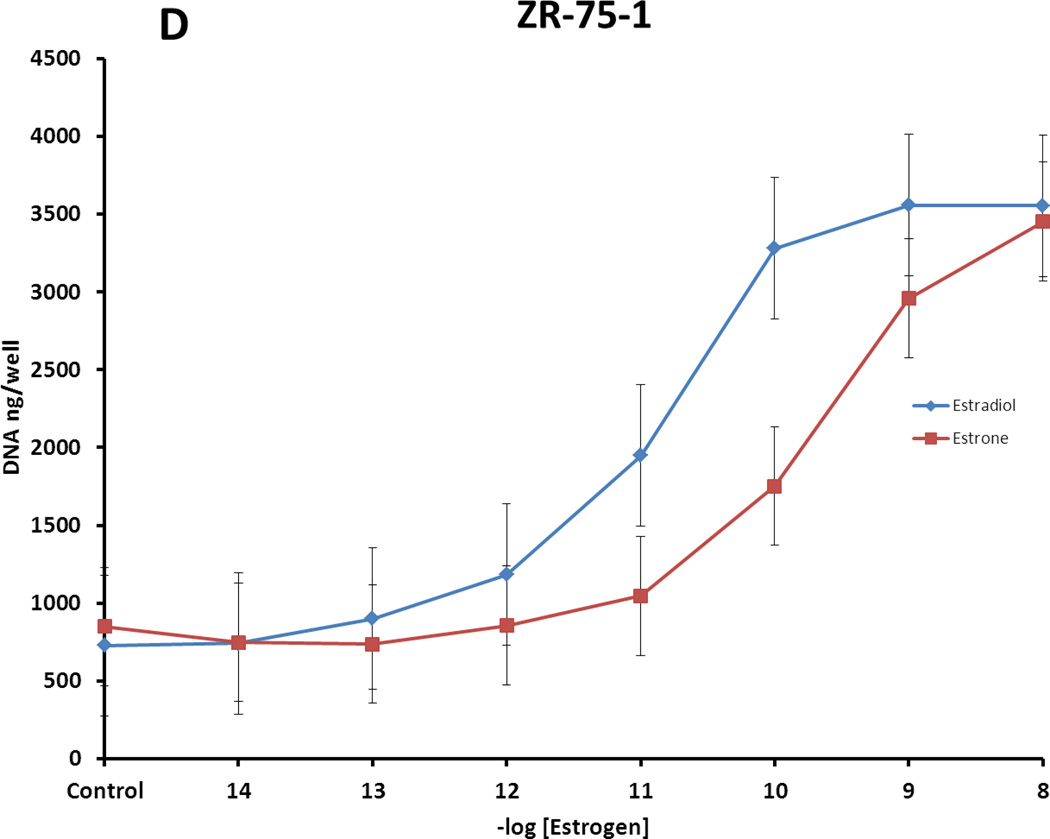Figure 3.
Proliferative responses of different ER-positive breast cancer cell lines to treatments with estradiol (E2) and estrone (E1). Growth of cells was determined by measuring DNA per well after 7 day treatments. A. MCF-7:WS8 cells, hypersensitive clones of MCF-7 cell line; B. T47D:A18 cells, hypersensitive clone of T47D cell line; C. BT474 ER-positive breast cancer cells (ATCC); D. ZR-75-1 ER-positive breast cancer cells (ATCC). Estradiol is the most potent of the natural estrogens in a woman’s body, and estrone, with the 17β hydroxyl oxidized to a ketone, is less potent. It does, however, significantly contrinue to breast cancer cell growth.




